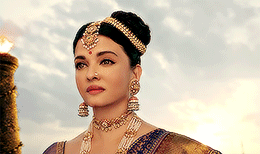/shethepeople/media/media_files/2025/01/11/pKhKxtBr2Ng32I1p0maj.png)
Actress Keerthy Suresh recently made waves with her breathtaking wedding look that exuded tradition and grace. For the Hindu ceremony, she embraced the beauty of historic elements like her mother's 30-year-old saree, another nine-yard Madisar saree, and heritage Tamil Iyengar ornaments. One such highlight was the Andal Kondai, a traditional hairstyle inspired by Andal, a Goddess and pioneering poet of the Bhakti Movement.
Why Is Andal's Hair Significant?
The Andal Kondai is characterised by a tilted bun adorned with jewels and a jasmine garland. Contemporary brides use an ornate wig-like accessory to replicate this historic hairstyle. The look is typically complete with a nethichutti (similar to Maang Teeka in northern India), and a braid adorned with ornaments called rakodi.
Marriages in the Tamil Iyengar community are seen as the sacred union between Andal (an avatar of Goddess Lakshmi), who is said to be the wife of Ranganatha (an avatar of Lord Vishnu). Thus, a bride's Andal Kondai is a symbol of divinity as it is considered an embodiment of Andal's devotion and femininity.
/shethepeople/media/media_files/2025/01/11/H3NZpwZMAwoUOiXLUsqq.png)
The Andal Kondai hairstyle is not limited to brides, as even many classical dancers wear it while performing stories of Andal and Ranganatha. The historic epic film Ponniyin Selvan also featured actresses like Trisha and Aishwarya Rai Bachchan in the Andal Kondai, reflecting its profound significance in Tamil culture.

Speaking to SheThePeople, Rituu Jhaveri, founder of Rowa's Jewels, highlighted the beauty and significance of hair accessories for brides. "Hair accessories in Indian weddings have transcended their traditional role to become an essential statement of style, culture, and wealth," she expressed, adding that cultural pride, evolving fashion, and the desire for exclusivity have led to a growing willingness to invest in such timeless ornaments.
Jhaveri also shared how jewellery today is an intricate balance between tradition and creativity, "Brides want accessories that are tailored to their wedding theme, personal style, and family traditions. Goldsmiths and jewellery designers are now creating intricate and artistic pieces that double as statement jewellery, encouraging higher spending on these ornaments," she said.
Who Is Andal?
Andal is a deeply revered personality in Tamil culture, celebrated as a symbol of divinity and feminine strength. She is a prominent literary figure from the Bhakti Movement - about 8th Century CE - and the only woman among the 12 Alwars (poet-saints) of Tamil Vaishnavism (associated with Lord Vishnu).
Andal's literary contributions include the Tiruppavai, a collection of thirty devotional hymns; and Nachiyar Tirumoli, a collection of 140 verses, one of which includes her dream of achieving the 'purpose of birth'-- marrying Lord Vishnu. Both of these works are recited during the 'Margazhi' sacred month of the Tamil calendar.
/shethepeople/media/media_files/2025/01/11/FgZxmD8YRK57MtTpwzz9.jpeg)
Many historians portray Andal as a feminist symbol, as she openly displayed her desire for Vishnu. By dedicating herself to Vishnu and refusing to marry a human, she spared herself from the customary duties of a wife that would 'limit her autonomy'. Andal is thus considered an emblematic figure for Tamil brides.
What's In My Jewellery Box is an exclusive SheThePeople series that delves into the rich history and significance of timeless ornaments-- from celebrity-inspired adornments to cherished heirloom pieces.
/shethepeople/media/agency_attachments/2024/11/11/2024-11-11t082606806z-shethepeople-black-logo-2000-x-2000-px-1.png)
 Follow Us
Follow Us